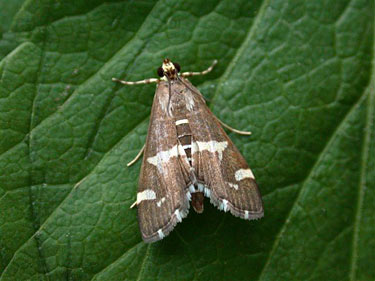|
Plant Protection
Insect pests and diseases must be controlled to ensure good yield and marketable
quality. Amaranth is susceptible to damage by foliar insects such as leaf miners,
leaf rollers, cutworms, aphids, flea beetles and mites. As far as possible use mechanical,
cultural and biological control measures. Avoid use of insecticides and fungicides.
Chemical pesticides should be used mainly as a corrective measure. Choose a pesticide
that targets the specific insect that is causing the damage, and try to avoid pesticides
that kill or inhibit the development of beneficial organisms. Choose pesticides
that have short persistence, i.e., the effects last only a few days. Harvest only
one week after pesticide spray.
Leaf webbers: Psara basalis,
Hymenia recurvalis and Eretomocera impactella
Leaf webbers cause considerable foliar damage to amaranth by webbing together the
leaves and feeding from with in.

|
|
Hymenia recurvalis
|
Control: As far as possible chemical insecticides should be kept away from amaranth
crop. Neem based preparations are ideal for control of amaranth pests. Non persistent
chemicals like 0.1 % malathion or dust malathion 10% DP can also be used.
Leaf spot disease: Cercospora
spp. and Alternaria spp.
Numerous white spots appear on the leaves, which later destroy the leaves completely.
The severity of the disease is more in red types.
For controlling leaf blight following practices are recommended:
1. Pseudomonas fluorescence – 2% ( foliar spray) + Trichoderma viridae -2% (soil application)
2. Turmeric powder + baking soda mixture (5:1 ratio/litre) (foliar spray and soil drenching)
3. Cow dung slurry supernatant 2% + Pseudomonas fluorescence 2% (foliar spray and soil drenching)
|